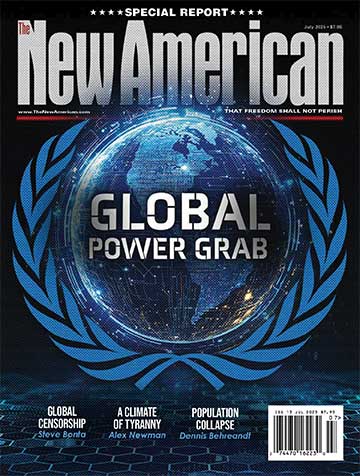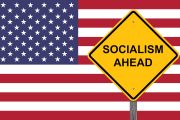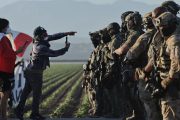
As of this writing, close to one month after the lethal fires, the somber reality stands at 115 confirmed dead and at least 315 individuals unaccounted for, many of whom are elderly or children. Thousands of homes and businesses have been destroyed, and hundreds of families have been displaced on an island with limited ability to meet their needs.
My wife and I lived in Kihei on Maui from 2016 to 2020, and we shared many wonderful memories with friends and family. This priceless icon of Hawaii life and culture is a tragic loss on many levels. While living on Maui, we witnessed firsthand how inept the ruling class in Hawaii has become.
The wildfire that devastated the town of Lahaina has left an indelible mark, resonating deeply with my experiences during my time on Maui. I have watched the situation very carefully from the beginning. Though information continues to surface, I have done my best to assemble an objective and accurate collection of the facts below.
Ignoring Clear Warnings
Given the context of similar fires during my time there, it is extremely disheartening to me that the government ignored clear warnings from a July 2021 report titled “Report on Wildfire Prevention and Cost Recovery on Maui.” That report detailed the extreme fire risk posed by the dry, invasive grass on the hillside above Lahaina.
Inadequate Disaster Protocols
In a region accustomed to fierce winds, the glaring lack of a protocol to shut down the power grid during hurricane-force winds is puzzling. The grid around Lahaina is rated for 60 mile per hour winds. Typically, if winds approach that limit, the system would be shut down to prevent the swaying power lines from touching and arcing, causing transformers to blow and shower sparks down onto the ground. The fire risk exists in high winds even if weather-beaten power poles remain upright. Reluctance to de-energize the grid, driven by concerns for water pumps critical to fire suppression efforts, underscores a deficiency in comprehensive planning.
Where Was the Water?
Lahaina’s water supply comes from groundwater pumped from wells and surface water from irrigation ditches fed by mountain rainfall.
Hawaii’s agricultural heritage includes an amazing water-management system dating back to 1878. On August 8 of this year, an initial fire was declared to be contained at around 9:00 a.m. However, this successful effort depleted Lahaina’s water supply. Anticipating more fires, a request to divert more water to continue the town’s fire-suppression effort was sent to Deputy Director M. Kaleo Manuel at the Hawaii Commission on Water Resource Management (CWRM). Despite the unfolding emergency, the CWRM delayed acting on the request, citing concerns for downstream users. The request was finally approved at 6:00 p.m., but it was already too late.
On August 10, Glenn Tremble of the West Maui Land Company sent a letter to Kaleo describing the tragic consequences of the approval not being given sooner. “Many people we know lost everything to the fires that ripped through West Maui. Lives were lost,” Tremble wrote. “Our employees and friends lost their homes, their business, and their lands. Our lives will never be the same.”
But it did not have to be that way. Tremble recounted the sequence of events after the request to divert water was sent to CWRM:
In response, CWRM asked us whether MFD [Maui Fire Department] had requested permission to dip into our reservoirs and directed us first to inquire with the one downstream user to ensure that his lo’i [pond for cultivating taro] and other uses would not be impacted by a temporary reduction (not elimination) of water supply. Communications were spotty, and we had already made a concerted effort to contact the one downstream user. He had not responded. By around 3:30 p.m., a flare up had shut down the Lahaina Bypass.
At around 6:00 p.m., we received CWRM’s approval to divert more water. By then, we were unable to reach the siphon release to make the adjustments that would have allowed more water to fill our reservoirs. We watched the devastation unfold around us without the ability to help.
“One thing that people need to understand especially those from far away is that there’s been a great deal of water conflict on Maui for many years,” Hawaii Governor Josh Green pointed out at a press conference. “It’s important that we’re honest about this. People have been fighting against the release of water to fight fires. I’ll leave that to you to explore.” But how about in the event of an emergency threatening many lives? Shouldn’t water be diverted for fire suppression in such a case, without bureaucratic delay?
Hawaiian politics is a complicated mix of efforts to preserve the Hawaiian culture while being dependent on tourism and inflows of money brought by mainlanders seeking to live their dream of experiencing Hawaiian life, as we did. While our experience with locals was overwhelmingly positive, there is an undertow of frustration among Hawaiians who can barely afford to live in their ancestral homeland.
Though it seems unbelievable that someone would reject a request for water to fight fires due to politics, this is just one of the aggravating factors of that day.
The well pumps did not have a reliable power source, such as underground power, and there has been no mention of emergency generators for this critical component in the West Maui infrastructure.
Ensuring the reliability of the Lahaina water supply was one of the primary roles of government, yet they failed due to political bickering and incompetence.
The wind-driven fire was so aggressive that fire crews could not have significantly changed the outcome even if they had unlimited water. Fire crews reported multiple structures catching fire around them while they were fighting a blaze on a particular structure.
Imagine for a moment how it would feel to be risking your life battling an inferno as a firefighter. Your water source runs dry, and your fire hose falls limp while you’re staring at a wall of flames engulfing your city. You’ve been doing everything you could all day to save whoever and whatever you could while seeing horrific suffering. Later you discover you ran out of water due to politics.
How do you process that?
Heroism on the Ground
As fire crews fought bravely, the water system depressurized, rendering them defenseless. They were quickly overwhelmed and had to flee for their lives as they attempted to save anyone they could on the way out of the area.
One trapped fire crew was unable to drive their truck out due to blocked exits. They hunkered down during the inferno as their apparatus (fire truck) began to cook with them still inside. When the windshield began to bubble and the interior started smoking, they bailed out and took cover on the downwind side of their truck. Their chief attempted to text his family his final goodbye, but the message failed to send on the broken cellular network.
A fellow firefighter commandeered a police cruiser and navigated through the fire to their location. They all crammed into the SUV, pulling an unconscious team member into the vehicle on top of them, and drove around the obstacles to escape.
Why Couldn’t Ocean Water Have Been Used?
Many people have wondered how a town perched on the edge of the ocean could run out of water for firefighting. A fire crew would never resort to seawater unless in a dire emergency, because the saltwater is very hard on equipment.
While this certainly qualified as “dire,” there was no practical way for fire crews to leave their assigned areas, navigate through traffic and blocked roadways to the shoreline or boat ramp to harvest sea water, then return to the fight. The fire advanced quickly and the time needed to fill the truck and return would have taken that crew out of the fight completely.
Communication Breakdown
Adding to the tragedy was a profound communication breakdown. Instead of activating warning sirens, a policy explicitly outlined for use during wildfires, the government’s decision to not use them left many bewildered. The choice to rely on text-message warnings turned into a grave misjudgment, as the weather had already disrupted cellular coverage, leaving many unaware of the imminent danger until it was too late to escape. The State of Hawaii Emergency Management Agency website states:
Hawaiʻi has the largest single integrated Outdoor Siren Warning System for Public Safety in the world. The all-hazard siren system can be used for a variety of both natural and human-caused events; including tsunamis, hurricanes, dam breaches, flooding, wildfires, volcanic eruptions, terrorist threats, hazardous material incidents, and more.
Maui’s Emergency Management Chief, Herman Andaya, resigned after his public announcement of the choice to not activate the sirens because of concerns that people would assume it was a tsunami warning and head uphill toward the fire danger. He doubled down on the choice, stating he did not regret the decision.
Let that sink in. Maui government officials believed people were not smart enough to understand the risks when they stepped outside and were met with massive billows of black smoke and flaming embers blowing toward them at 60-80 miles per hour.
Challenges in Response and Coordination
The crisis witnessed on the ground accentuates another layer of the government’s inadequacy. Absent a well-structured incident command system, confusion and indecision became unfortunate hallmarks of the emergency response. In the face of such a challenge, even the most well-intentioned efforts faltered without a coordinated approach.
For example, police blocked roads out of Lahaina and routed people toward Front Steet due to downed power lines. While they were “following orders,” they didn’t realize they were trapping dozens of people in the path of an inferno. To escape, some survivors drove through yards and debris-filled side roads, with flames raging around them. Others were forced to jump into the ocean to get away from the intense heat, and the wind hurled flaming debris at them in the water.
Dependency vs. Self-reliance
Perhaps the most sobering lesson here is that misplaced faith in government intervention can lead to tragedy. The government’s responsibility to its citizens demands an ability to anticipate worst-case scenarios, especially in a region that’s no stranger to such crises. However, even the best-prepared agency isn’t typically geared for the compounding effects of multiple “worst case” situations at the same time.
Unfortunately, following the directions of incompetent people can get us killed, so it is essential that we have our own disaster preparation plan worked out with our family before a disaster comes to our door.
Essential preparedness steps include everyone in the family knowing multiple routes to safety, a durable thumb drive and/or packet with copies of all essential documents, and emergency bags packed with the basics for each member of the family. Most of all, we must listen to our instincts when they are telling us we are in danger and need to move.
Fact vs. Fiction
In the aftermath of horrible things, it’s natural to try to understand what happened. We try to fit the pieces we know together into something that makes sense. These days it’s easy for people to share these half-baked or ignorant theories on social media, where other people, also seeking understanding, latch onto the ideas and share them with others.
Times of stress call for wisdom. We must develop a habit of discerning between conspiracy theory and conspiracy fact, and we should never get ahead of the evidence.
In this case, popular theories included directed energy weapons and intentional, premeditated fires set to facilitate a land grab and the creation of a 15-minute city or some other nonsense. While I acknowledge there are a lot of things going on behind the curtain and multiple agendas are pulling the country in dangerous directions, wandering off into fantasies only serves to divert focus from the true cause of this suffering: government’s inability to execute effective disaster management.
The Gell-Mann Amnesia Effect
This brings us to the Gell-Mann Amnesia Effect. If we see content about something we know a lot about, then notice the author is ignorant or inaccurate about the topic, we typically move on. However, when that same author shares something about which we’re less familiar, we choose to believe him, especially if his message fits our point of view.
But, if someone proves unreliable in one area, how can we trust him on any topic?
What Can We Learn From This?
In the aftermath of the Lahaina catastrophe, the message is clear: Competent governance, personal preparedness, and a cautious approach to information are integral to protecting ourselves and our loved ones from future tragedies.
I hope we all learn from this horrific event and take personal responsibility seriously moving forward.
We are our own first responders.




